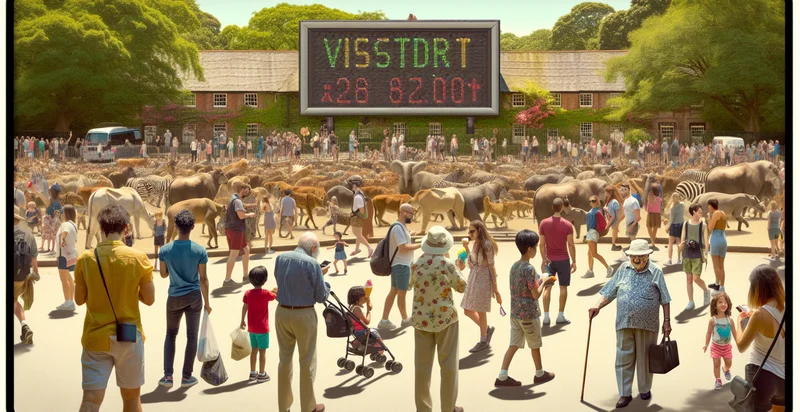Identify zoo visitors count
using AI
Below is a free classifier to identify zoo visitors count. Just upload your image, and our AI will predict the number of visitors in each section of the zoo. - in just seconds.

Contact us for API access
Or, use Nyckel to build highly-accurate custom classifiers in just minutes. No PhD required.
Get started
import nyckel
credentials = nyckel.Credentials("YOUR_CLIENT_ID", "YOUR_CLIENT_SECRET")
nyckel.invoke("zoo-visitors-count", "your_image_url", credentials)
fetch('https://www.nyckel.com/v1/functions/zoo-visitors-count/invoke', {
method: 'POST',
headers: {
'Authorization': 'Bearer ' + 'YOUR_BEARER_TOKEN',
'Content-Type': 'application/json',
},
body: JSON.stringify(
{"data": "your_image_url"}
)
})
.then(response => response.json())
.then(data => console.log(data));
curl -X POST \
-H "Content-Type: application/json" \
-H "Authorization: Bearer YOUR_BEARER_TOKEN" \
-d '{"data": "your_image_url"}' \
https://www.nyckel.com/v1/functions/zoo-visitors-count/invoke
How this classifier works
To start, upload your image. Our AI tool will then predict the number of visitors in each section of the zoo..
This pretrained image model uses a Nyckel-created dataset and has 9 labels, including 1-5, 1001+, 101-200, 11-20, 201-500, 21-50, 501-1000, 51-100 and 6-10.
We'll also show a confidence score (the higher the number, the more confident the AI model is around the number of visitors in each section of the zoo.).
Whether you're just curious or building zoo visitors count detection into your application, we hope our classifier proves helpful.
Related Classifiers
Need to identify zoo visitors count at scale?
Get API or Zapier access to this classifier for free. It's perfect for:
- Visitor Insights Dashboard: This use case involves integrating the false image classification function to provide zoo management with real-time data on visitor counts. By accurately identifying and counting visitors, the zoo can enhance its operational strategies, ensuring optimal resource allocation during peak times.
- Marketing and Promotion Strategies: The data generated from the visitor count can be utilized to craft targeted marketing campaigns. By analyzing peak visitor times and demographics, the zoo can promote special events, discounts, or educational programs to attract larger crowds.
- Safety and Security Monitoring: The false image classification function could be implemented within security systems to monitor visitor flow and density in various zoo areas. This application enhances safety protocols by alerting staff in real-time when certain sections become overcrowded, allowing for immediate crowd control measures.
- Staffing Optimization: By analyzing visitor counts, zoo management can make informed decisions about staffing levels across various departments. This ensures that there are enough personnel to provide assistance, maintain cleanliness, and enhance the overall visitor experience.
- Seasonal Trend Analysis: The zoo can leverage visitor count data to identify seasonal trends and patterns in attendance. Understanding these trends allows management to plan ahead, optimizing resources and tailoring experiences to align with visitor behaviors throughout the year.
- Conservation Program Assessment: The count of visitors can inform the effectiveness of conservation programs and educational initiatives. By correlating visitor numbers with specific programs, the zoo can assess engagement levels and identify opportunities for improvement in conservation efforts.
- Revenue Forecasting and Financial Planning: Accurate visitor counting can significantly enhance financial forecasting for the zoo. By knowing how many visitors are expected at different times, the zoo can better plan for revenue generation through ticket sales, concessions, and merchandise, ultimately aiding in budget management.


